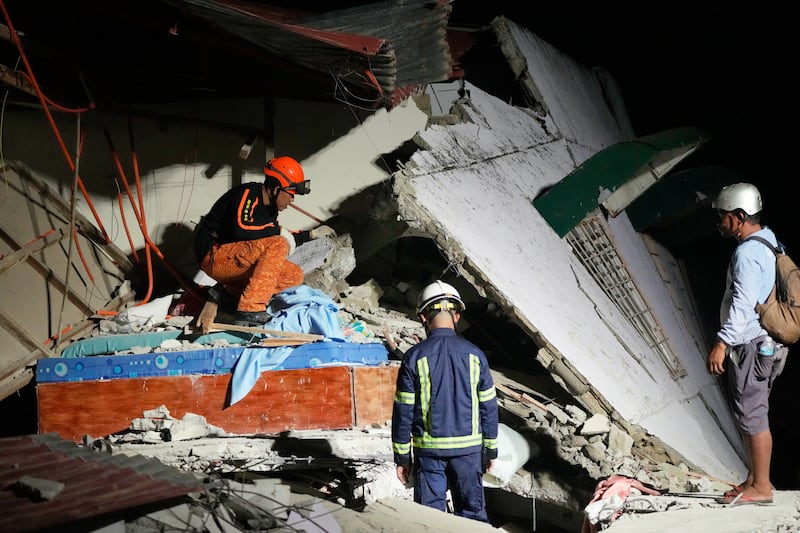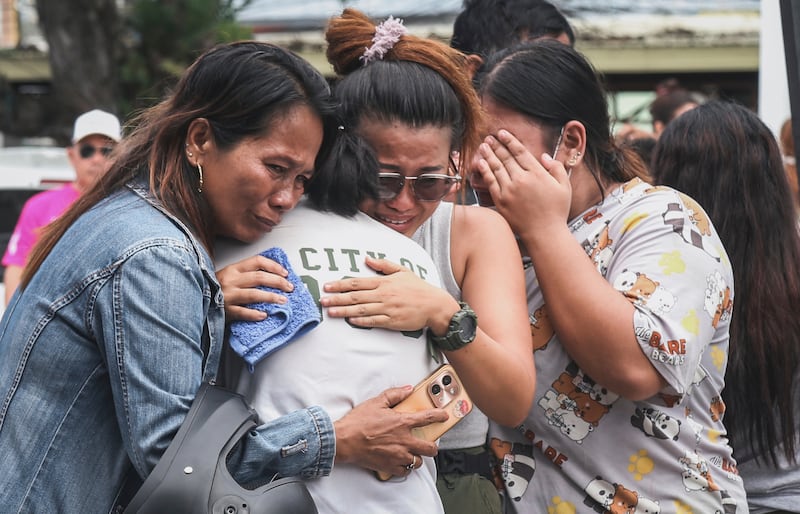- A massive earthquake in central Philippines has killed at least 69 people and caused damage to buildings and infrastructure.
- The death toll is anticipated to rise as searches continue for trapped individuals.
- Cebu province declared a state of emergency following the earthquake.
On Tuesday night, a massive 6.9 magnitude earthquake hit the central area of the Philippines, killing at least 69 people and injuring over 200 others.
Following the quake, which hit at 10 p.m., rescuers spent Wednesday using backhoes and dogs to look for survivors in collapsed houses and other damaged buildings, per The Associated Press. There are still dozens of people unaccounted for following the massive quake and subsequent aftershocks.
The death toll was expected to continue rising as rescuers search for those trapped in the rubble. The ongoing search has been hampered by rain as well as damaged bridges and roads.
The earthquake’s epicenter was about 12 miles northeast of Bogo, a coastal city in the Cebu province of about 90,000 people, per the AP. About half the deaths reported were in the Cebu province.
Cebu Gov. Pamela Baricuatro has placed the entire province under a state of emergency, per The New York Times.

Based on an ongoing rapid damage assessment, the Philippine government is considering whether to seek help and aid from foreign governments.
Multiple countries, including the United States, Japan and Australia have expressed condolences as well as the European Union.
“We stand ready to support the Philippine government’s response as friends, partners, allies,” MaryKay Carlson, U.S. ambassador to the Philippines, said in a post on X.
What damage was caused by the earthquake?
Bogo was the hardest hit city. The most intense shaking from the earthquake occurred in Sipalay, Lapu-Lapu, Argao and Tacloban, according to The Washington Post.
The earthquake caused at least one landslide in Tabuelan and caused multiple bridges and roads to become impassable. Two seaports, in San Remigio and Bogo, are non operational.
As of Wednesday morning, eight cities and municipalities had no power, another three were left without communication, per The Washington Post.
The earthquake caused damage to houses, businesses, churches, government buildings and other structures. Classes have been suspended at 46 schools and work was suspended in multiple cities.
According to The New York Times, there are two or three hospitals that have been rendered unusable by the quake.
Public works personnel are being sent to Cebu to inspect buildings and infrastructure.
Ahead of the earthquake, a tropical storm hit the Philippines over the weekend, killing at least 27 people and also knocking out power and prompting evacuations, per The Washington Post.
What caused the earthquake?
According to The Washington Post, the rupture likely originated along an unmapped fault in Earth’s crust running through several populated areas.
Because it sits along the Ring of Fire, the most seismically active area in the world, the Philippines is prone to earthquakes. Due to the large size of the earthquake, it will likely spur aftershocks for months, but they will become less frequent and less intense.
Since so much of the Philippine archipelago is covered by water, it is not unusual for faults to be unmapped, per The Washington Post. A strong earthquake in 2013 occurred along an unmapped fault and killed more than 200 people.


